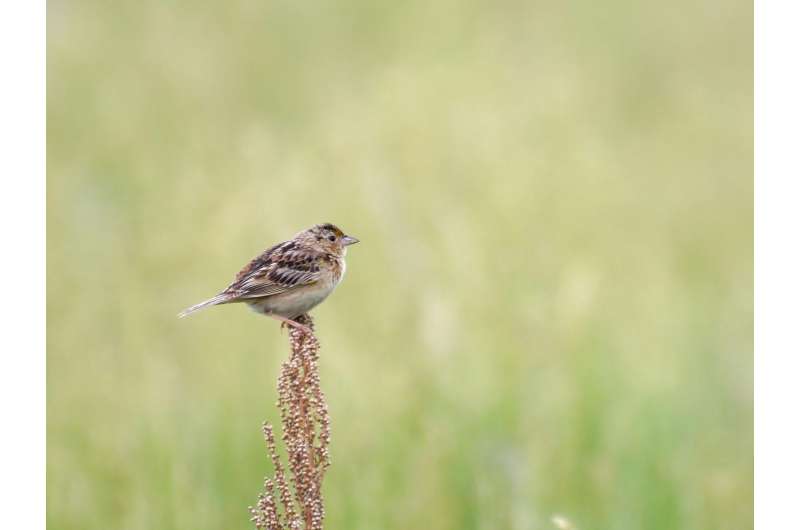Changing weather patterns threaten grassland sparrows

Two of North America's declining grassland songbirds may be particularly vulnerable to altered weather patterns caused by climate change, according to new research in The Condor: Ornithological Applications.
Extreme heat waves have been known to kill adult birds, and droughts can cause birds to abandon nests or skip breeding altogether. To learn what species might be at greatest risk, Jessica Gorzo of the University of Wisconsin-Madison and her colleagues analyzed more than four decades of bird survey data from the Dakotas, Montana, and Wyoming, looking for patterns linking grassland bird abundance to temperature and precipitation.
Of the 14 bird species the researchers focused on, 5 showed significant associations with weather trends, their populations appearing to increase or decrease depending on whether a year had been particularly warm, cold, wet, or dry. Two, the closely related Grasshopper and Baird's sparrows, are already declining enough to concern conservationists, and this study shows that they may be particularly vulnerable to the warmer, drier conditions that are likely becoming more frequent due to climate change.
"With climate change, there are bound to be winners and losers," according to Gorzo. "Of the species we considered, Grasshopper and Baird's Sparrows may be imminently at risk. These species responded similarly to our weather metrics, which made sense in light of their shared life history traits. Knowing that these species need tall, lush grassland vegetation, increasingly dry conditions could inhibit the growth they need to be successful."
The data for the study came from the North American Breeding Bird Survey, a program for which skilled volunteer birders conduct annual bird counts along set routes. "It was really an honor to work with this dataset, because though I don't run a route myself, I have many friends who have been visiting the same route year after year and take pride in what they contribute to our understanding of the continent's birds," says Gorzo. "It is a tremendous volunteer effort that takes skill, dedication and hard work. To be able to put it to good use to elucidate some patterns relevant to climate change felt really rewarding, and I can't thank birders over the decades enough for working year in and year out to add to this dataset."
Provided by The Condor


















